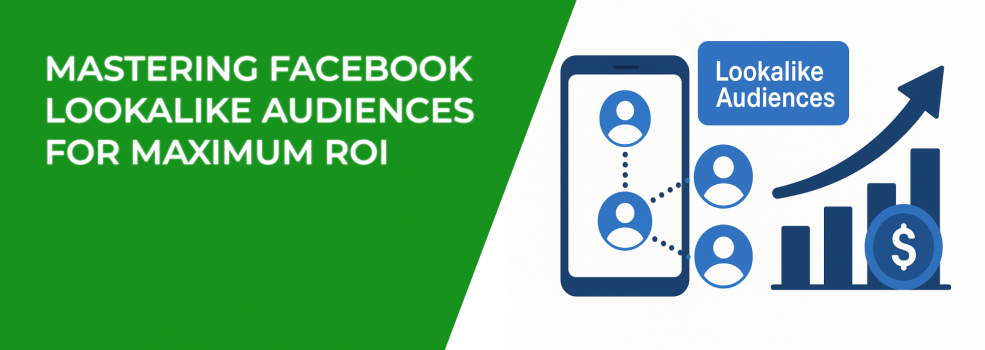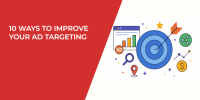If you run Facebook ads, you’ve probably heard of Lookalike Audiences. They’re one of the easiest ways to reach people who are likely to buy from you — because they look like your best customers. But in 2025, the way you build and use these audiences matters more than ever.
Done right, Lookalike Audiences can lower your costs, increase conversions, and open the door to brand-new markets. Done wrong, they can burn through your budget fast. Let’s talk about how to get them right, step by step.
What Exactly Is a Facebook Lookalike Audience?
Think of a Lookalike Audience as a digital twin of your best buyers. You give Facebook a “source audience” (your seed list) — maybe it’s people who purchased from you in the last 90 days, leads from a top campaign, or visitors to a key landing page. Facebook’s algorithm then goes out and finds millions of people with similar traits, interests, and behaviors.
The idea is simple. The impact? Huge — if your source audience is strong. If you want to dig into how Lookalikes compare to Custom Audiences, see our breakdown here: Custom vs. Lookalike Audiences: What Works Best for Facebook Campaigns.
Start With a High-Quality Source Audience
Your Lookalike is only as good as the data you feed it. The better your seed list, the more accurate your targeting.
Aim for audiences with high intent and recent activity, such as:
-
The top 5% of customers by lifetime value.
-
People who completed a purchase in the last 60 days.
-
Leads from your highest-converting campaign.
Here’s a tip many overlook: if you’re a B2B advertiser, use offline data sources like CRM exports or trade show attendee lists. Facebook can match these to user profiles, giving you incredibly relevant Lookalikes you’d never get from pixel tracking alone.
Choose the Right Size for Your Goal
Facebook lets you define your Lookalike size from 1% to 10% of a country’s population.
Here’s how it breaks down:
-
1% Lookalike: The closest match to your source audience. Best for accuracy and high conversion rates.
-
2–3%: A balanced choice that offers more reach without losing too much relevance.
-
4–5%+: Larger audiences for aggressive scaling. Useful when you’ve saturated smaller Lookalikes, but often less precise.
Testing is essential. Create multiple ad sets with different percentages and compare cost per result. In some countries, a 2% Lookalike can beat a 1% in both cost and total conversions, simply because the audience pool is slightly broader.
For campaigns that need flexibility, you can also explore Advantage Lookalike Audiences, which let Meta automatically expand beyond your set size if it predicts better performance.
Segment by Funnel Stage
Most advertisers throw everyone into a single Lookalike Audience — and that’s a missed opportunity. Instead, create different Lookalikes for different funnel stages.
Here’s a practical setup:
-
Awareness: Lookalike of all website visitors in the last 90 days
-
Consideration: Lookalike of people who watched a product demo video or engaged with key posts
-
Conversion: Lookalike of high-value customers or repeat buyers
This lets you tailor your ad creatives and messaging to match the stage your audience is in. A person who’s just discovering your brand doesn’t need the same ad as someone who’s ready to buy — and this segmentation ensures they don’t get the same one.
Combine Lookalikes With Other Targeting
While Meta’s automation has gotten smarter, there’s still value in layering your targeting.
Some examples worth testing:
-
A 1% Lookalike of past buyers + interest in “organic skincare” for a natural beauty brand
-
A 2% Lookalike of high-spending customers + geo-targeting to your top-performing cities
-
A Lookalike of recent leads + behavior targeting for people who shop online weekly
This combination approach lets you keep your audience relevant while still benefiting from Facebook’s matching algorithm.
And if you want even more precision, value-based Lookalike Audiences take this to another level by factoring in how much each customer has spent, not just that they’ve purchased.
Keep Your Data Fresh
Data gets stale faster than most advertisers think. People change jobs, move, or lose interest. That’s why refreshing your seed list regularly — every 30 to 60 days — keeps your Lookalikes sharp.
Here’s a routine you can follow:
-
Remove low-value or unengaged customers from your seed list
-
Add new high-value leads and recent buyers
-
Rebuild your Lookalike from the updated list
If you sell high-ticket products, consider running rolling Lookalikes that always pull from your most recent top spenders. That way, your targeting reflects your current best customers, not last year’s.
Scale With a Plan
Scaling Lookalike Audiences takes patience. If you jump from a 1% audience to a 10% overnight, your cost per acquisition will likely skyrocket.
Instead, scale like this:
-
Start with your highest-performing 1% Lookalike.
-
Duplicate the ad set and test a slightly larger percentage.
-
Expand into new countries or regions with proven audiences.
-
Use Advantage Budget Allocation to push more budget toward your top performers automatically.
Scaling should feel like turning up a dimmer switch — not flipping on a spotlight.
Final Thoughts
Lookalike Audiences are still one of the most powerful Facebook ad tools out there — but only if you give the algorithm the right starting point, keep your data fresh, and align your targeting with your goals.
Before your next campaign, ask yourself: “If I were Facebook, would this seed list make it easy to find my next best customer?” If the answer is no, it’s time to clean up your source audience.
When used with intention, Lookalike Audiences can deliver steady ROI, help you scale faster, and open the door to whole new groups of customers you never thought you could reach.

